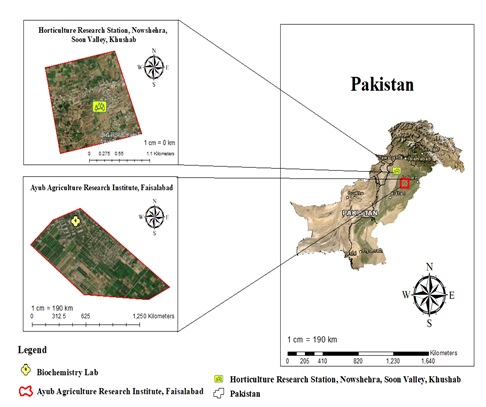Nutritional Quality and Yield Performance of Plum (Prunus domestica) Varieties Grown in Punjab, Pakistan
Abstract
 Abstract Views: 0
Abstract Views: 0
Pakistan is ranked 17th in the world for plum production, with a total output of 67,000 tonnes. In terms of area and production, plum (Prunus domestica) is Pakistan's second largest stone fruit, after peach. Plum (Prunus domestica L.) is a temperate zone fruit crop, made up of different varieties. This study was carried out to evaluate the nutritional quality and yield performance of five different plum varieties (Methley, Shakar Prune, Santa Rosa, Hersminar, and Red Beaut) grown in the Punjab province of Pakistan. Plum samples were collected from the Horticultural Research Station, Nowshera (Soon Valley), Pakistan during May 2021 and analyzed for fruit yield and nutritional quality parameters. The maximum fruit fresh weight (52.9g) was recorded in Red Beaut and the lowest fresh weight (12.4 g) in Methley. The cultivar with the highest nutritional value was Shakar Prune with 16.4% of total soluble solids (TSS) and 12.2% of total sugars content, whereas the lowest nutritional value was recorded in Herisminar with total soluble solids (TSS) and total sugars content of 14.8% and 10.0%, respectively. All varieties showed significant variation in terms of fresh weight, total soluble solids (TSS), and total sugars. The results showed the yield performance and nutritional quality of different plum varieties, with Red Beaut and Shakarprune cultivars highlighted as the best. The study concluded that yield performance and nutritional quality depend strongly on the respective plum variety.
Downloads

Copyright (c) 2023 Noman Ahmad, Sarfraz Ahmad, Iqra Tariq, Iftikhar Ali, Muhammad Usman, Humna Tariq, Ghulam Murtaza, Abrar Ahmad

This work is licensed under a Creative Commons Attribution 4.0 International License.
BSR follows an open-access publishing policy and full text of all published articles is available free, immediately upon publication of an issue. The journal’s contents are published and distributed under the terms of the Creative Commons Attribution 4.0 International (CC-BY 4.0) license. Thus, the work submitted to the journal implies that it is original, unpublished work of the authors (neither published previously nor accepted/under consideration for publication elsewhere). On acceptance of a manuscript for publication, a corresponding author on the behalf of all co-authors of the manuscript will sign and submit a completed the Copyright and Author Consent Form.









